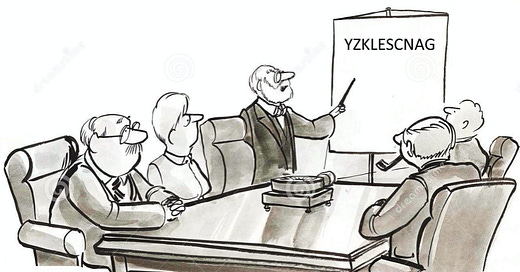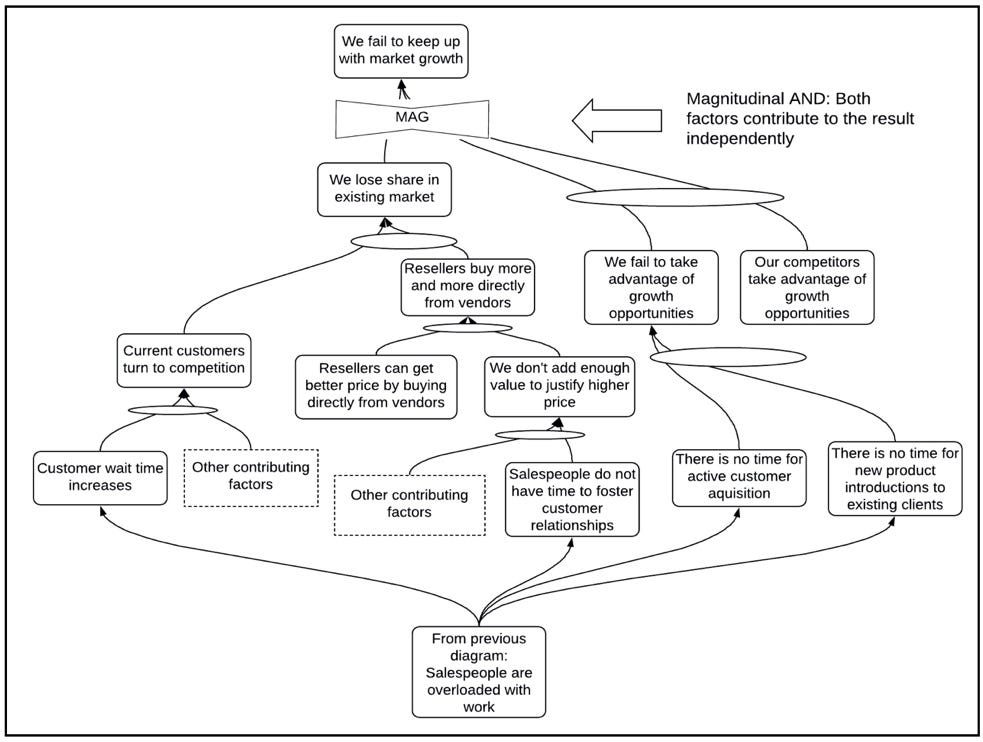What Is Our Business? - A Current Reality Tree Example
A real life story of how a company found its way through robust Current Reality Tree analysis.
This is a recent real-life story. The company is a well established importer of hardware and tools. They had been experiencing dwindling market share and inadequate profits for quite a while. Excess stock was piling up and service to customers had deteriorated. Repeated attempts at gaining consensus on ways to improve the situation had all failed and management were in disagreement on what to do.
The first step in the analysis was to work with a group of managers and key employees to structure a Goal Tree to identify the goal and Critical Success Factors. Not surprisingly, for a for-profit business, the consensus was on the goal of improving profits, short and long term. The Critical Success Factors identified directed the team to the biggest problems, or Undesireable Effects (UDEs), the company was experiencing.
Building the Current Reality Tree took quite a bit longer than setting up the Goal Tree. The core team consisted of 3 top managers, but others were pulled in to provide the functional insights when required.
The three main tracks of analysis had to do with excess stock piling up, inadequate sales growth and slow service. All those UDEs were analyzed in detail. It soon turned out that one of the main underlying causes where the sales team was concerned was confusion and complexity due to an excess number of identical or very similar products from different vendors - sometimes they stocked as much as 10-12 such identical products. This was also a major contributing cause to overstocking. Other main causes were a lack of investment in service, only having a single sales channel to serve both resellers, contractors and individuals, and lack of effective purchasing management.
It was actually when analyzing why identical products continued to pile up, that the team identified the Critical Root Cause behind most of the problems. It turned out the reason was that when resellers started buying directly from vendors, the company usually set out to find new vendors for the products in question.
Diagram 4: „We define ourselves as a distributor“. Partial, simplified Current Reality Tree. Part 1.
It was in fact an off-hand remark by the managing director, when asked about this, that led us to the solution: „Well, we define ourselves as a distributor of course. We always have been“. And inherent in this view was that their retailers should buy from them, not from vendors directly. The fact, however, was that sales through resellers, once a main source of income, had become as little as a fourth of their total revenue. It also turned out that the belief that sole distributorship provided better margins was false.
Diagram 5: „We define ourselves as a distributor“. Partial, simplified Current Reality Tree. Part 2.
This Critical Root Cause, a widely shared, but false, idea of what the company‘s business was, was actually something nobody had expected. But as it turned out, this tacit consensus on a long-outdated definition of their business, was in fact behind most of the other problems too: Revenue was not growing because instead of using different sales channels towards different markets, they ran a single specialised sales team – as fitting for a distributor - and even if they realised they might be able to improve sales by adding more channels, they refrained from doing it so they would not upset the resellers (who actually did not matter much to them any more, and who took every opportunity to buy directly from their vendors). Service was considered as something secondary that did not really matter – this was not a key area for a distributor. We see this in the simplified Current Reality Tree below.
As often happens, once a Critical Root Cause has been identified, everything now just fell into place. And when the finished tree diagram was shared with the rest of the team the reaction was highly rewarding for those involved in constructing it: „Of course, this has been the problem the whole time. Why didn‘t we realise it?“
Now, the way forward was clear. Plans were made to add new sales channels, restructure the purchasing process, invest in better service capabilities and set up a business development function to seek out new opportunities. And this time, the plans were actually put in motion: A year after the first steps in the Logical Thinking Process analysis were taken, the company is now on a fast track forward with a clear goal and strong consensus on what needs to be done to achieve it.
------------------------------
How likely is it that this situation would have been solved without the Logical Thinking Process analysis? Would any amount of financial analysis have led to this conclusion and the common understanding of its significance? Of course it would not have. The difference between the Logical Thinking Process and the methods most often used is that as a qualitative, not quantitative, analysis framework, the LTP really helps unearth not just faulty financial ratios or broken processes. It helps getting to the false beliefs and paradigms that so often are the real cause of the problems experienced.
Taken from From Symptoms to Causes - Applying the Logical Thinking Process to an Everyday Problem







This post takes me back to the days of OPT, TOC and effect-cause-effect trees. Working with the people at Creative Output was always very rewarding.